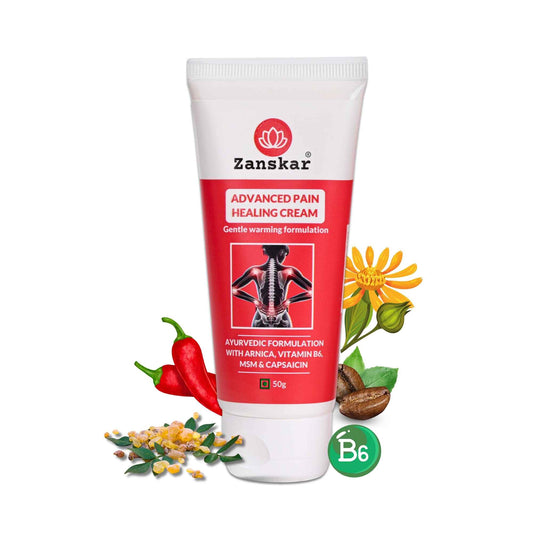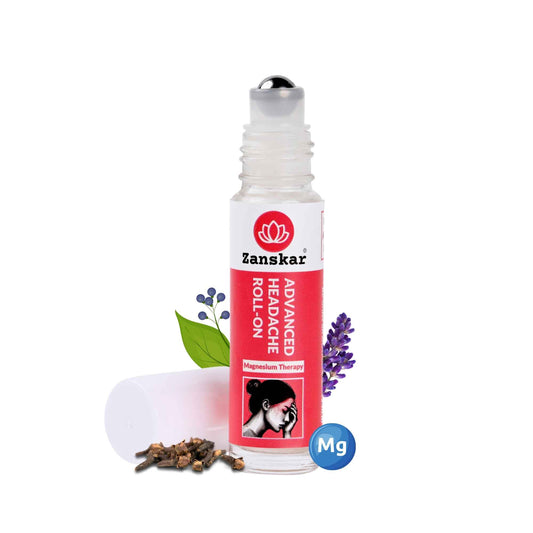
Ice or Heat for Back Pain: What Should You Use?

Whether you just pulled your back picking a heavy object are nursing recurring back pain, you may be pondering the age-old dilemma: Should I use heat or ice? It’s one of the most common questions our physical therapists get. Both icing and heating can be simple and effective tools in reducing your back pain, but “there’s no research to say definitively what’s best in what situation,” explains Dr Rashi Goel, a physical therapist at Zanskar Health.
As a general rule, think ice = injury.
· Heat is most commonly used for muscle stiffness, chronic pain (like joint pain), and managing stress and tension.
· Ice is most commonly used for new injuries and when there is swelling, redness, or if an injured area feels hot (a sign of inflammation).
But remember: You’re the expert on you. The most effective treatment is what makes you feel better. If you feel that ice or heat helps you more than the other, or that one does not help, use your judgment. If a treatment makes symptoms worse, discontinue using that treatment.
Ice Therapy for Back Pain
Ice (sometimes called cryotherapy) constricts (shrinks) blood vessels. This limits blood flow to an area, which reduces swelling and inflammation. As swelling decreases, pain should decrease. Ice also reduces pain by temporarily numbing nerve endings. You might benefit from using ice when you have:
· A new injury
· Visible swelling
· Bruising
· Redness
· Warmth at the site of injury
· Pain or discomfort following activity (such as a work shift or exercise)
How to Use Ice
You can use any of the following:
· Ice pack. Buy them or make your own. Put ice in a plastic bag, add a little water to cover it, then wrap it in a wet towel.
· Ice towels. Wet a towel with cold water, squeeze until damp, fold it and place it in a plastic bag and freeze it for 15 minutes.
· Ice sponge. Wet a sponge with cold water, place it in a plastic bag and freeze it for 15 minutes.
· A bag of frozen veggies. Wrap a bag of frozen peas or corn with a thin towel.
· DIY gel pack. Fill a zip-top bag with liquid detergent and freeze.
· Instant ice packs. Keep these handy in a closet or first aid kit. When cracked, they become cold right away, so they don’t need to be stored in the freezer.
How Often to Use Ice
· After an injury, ice for 10 minutes once an hour the first day, then every two to three hours the second and third day.
· After that, ice for 10 to 15 minutes three times a day, usually in the morning, late afternoon, and about a half hour before bed.
· Don’t ice for more than 20 minutes at a time.
· Always have a layer (plastic bag, towel, etc.) between ice and your skin.
Don’t overdo it: “I’ve seen patients with ice burn on their back from putting ice directly on their skin for long periods of time,” says Dr. Goel. After three days of icing, switch to heat.
Should You Try a Cold Plunge for Back Pain?
You may have heard that plunging into an ice bath, or even standing in a cold shower can help relieve back pain. Save your time and money, says Dr. Goel. Research on professional swimmers found that cold water plunges can improve pain relief from musculoskeletal conditions such as joint pain or fibromyalgia. But “there’s no research looking at cold plunges in the average population,” says Dr. Goel. “You’re better off focusing on gentle strengthening and stretching exercises for your back pain.”
Cold plunges are also stressful on your body. Overuse could cause hypothermia and strain your lungs, both of which would make your back pain feel worse, she notes.
Heat Therapy for Back Pain
Heat increases blood flow and promotes muscle relaxation. It helps relieve ongoing aches and pains, such as those related to joint pain. The American College of Physicians recommends heat as a first-line treatment for new back pain.
Avoid heat if you have bruising, swelling, or a new, acute injury as this may worsen inflammation and delay healing. Rather, use heat for:
· Stiffness
· Sore muscles
· Preventing muscle spasms
· Reducing stress and tension
· Preparing for activity and exercise
“I am a big fan of heat — most people tend to respond well to it,” explains Dr. Goel. “It’s a very effective way to deliver nutrients like blood and oxygen to injured tissue. This helps muscles heal and prevents stiffness.” Heat also helps nerve-related back pain, like sciatica. Nerves tend to relax and respond better to heat than ice, she notes. Heat therapy also increases strength and flexibility among patients with chronic back pain, according to a 2018 study in the journal Clinical Biomechanics.
Heat therapy also increases strength and flexibility among patients with chronic back pain, according to a 2018 study in the journal Clinical Biomechanics.
How to Use Heat
You can use any of the following:
· Heating pad. Look for regular or moist heat versions.
· Hot shower or bath. This may help relieve morning stiffness to start your day or help you relax and soothe muscle tension before bed.
· Hot water bottle. You can buy these online or at drugstores; they’re made with materials that hold heat longer than regular water bottles.
· Warm towel. Pop a damp towel in the microwave for 30 to 60 seconds. Make sure it’s not too hot before applying to your back — it should feel warm and soothing, not hot.
How Often to Use Heat
Apply a heating pad, hot water bottle, or warm towel for 15 to 20 minutes at a time. How often should you do it? That depends on what’s comfortable for you. Dr. Goel recommends doing it before bed, and if time allows, once more in the day if possible. If you do use a heating pad, set it on low or medium (not on high), and never go to sleep while the heating pad is on.
When Shouldn’t You Use Ice or Heat?
While both can be effective, there are some instances that you just shouldn’t use them, says Dr. Goel. This includes:
· You have an open wound. If you put ice or heat on that part of your skin, it may raise the risk of infection. Check with your doctor first
· You’ve had a previous bad reaction. Not everyone responds the same way to heat or cold. If you found that they made your symptoms worse, skip it and talk to your doctor or physical therapist about other options.
· Don’t use heat if you have a lot of swelling - for example, you’ve just had back surgery, adds Dr. Goel. In those cases, ice is a better option.
PT Tip: Do the 4-Minute Check
Whether you use heat or ice, Dr. Goel recommends that you check your skin after four minutes to make sure there’s no irritation to the skin. “If an area really hurts, you may not notice an ice or heat burn,” she explains. While it’s important for everyone, it’s especially key for older adults, who have much more sensitive skin, she adds.
Learn More About Zanskar Health for Back Pain Relief
If you have joint or muscle pain that makes it hard to move, Zanskar offers the most advanced full stack pain relief solutions for you.
Now available to purchase, Zanskar® Advanced Pain Healing Cream has a unique formulation of natural ingredients like Arnica, Vitamin B6, MSM and Capsaicin, which is trusted by over 20L+ pain sufferers globally. It provides lasting relief from muscle and joint discomfort that you can feel good about. Get your fix before stocks run out - buy now.
You can also gain access to therapeutic exercises and stretches for your condition by downloading the Zanskar Health physiotherapy mobile app. Additionally, you’ll have a personal care team to guide, support, and tailor our program to you, including behavioral and nutritional coaching.
Download our mobile app here 👉 download and track your exercise streak.
Medical Review: This article is written by Dr Nishtha Mittal (Senior Health Content Editor at Zanskar Health) and has been medically reviewed by Dr Rashi Goel (Senior Physiotherapist at Zanskar Health). This article and its contents are provided for educational and informational purposes only and do not constitute medical advice or professional services specific to you or your medical condition.







